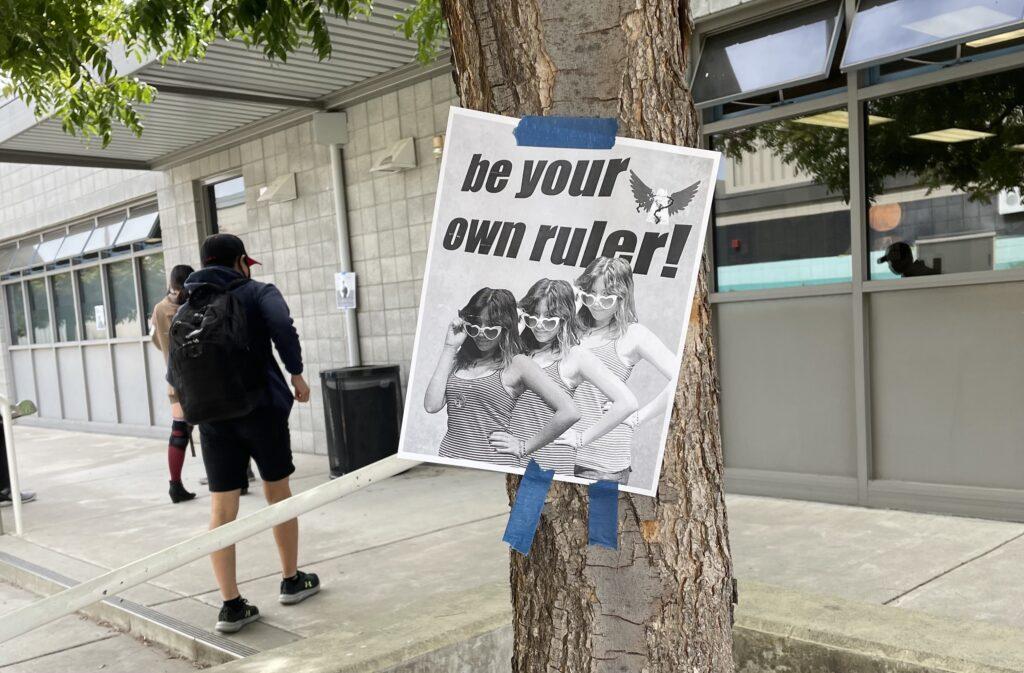In early October, various spots around campus were bedecked with propaganda flyers featuring Photoshopped images of students, original logos and attention-grabbing slogans like “Be your own ruler” and “Canahuati for conservatism.”
Less visible to the public eye was the excitement in the Media Arts Program Annex on Oct. 7 as students donning regalia such as tattoo sleeves, aprons and peasant gowns with toy babies in their arms filed into the large room. They were about to reach the culmination of multiple weeks of preparation — speechwriting, presentations, poster design and research — for their biggest assignment so far.
These seemingly peculiar activities were part of the major creative project in social studies teacher Mike Davey’s World History MAP class: Daveyland, which utilizes aspects of all three of the MAP courses including World History MAP, English 10 MAP (taught by Marcos Cortez) and Media Arts 1 (taught by Alex Hemmerich). Davey and other sophomore-level MAP teachers have done the project for several years, and it’s always a highlight of the first semester.
The premise of the project was that the former king of Daveyland was stepping down, and the groups were instructed to create an interactive presentation promoting their form of government for the kingdom. The objective was to get the most votes, and have their “ism,” a social or economic philosophy prevalent during the nineteenth century, replace the previous monarchy.
Sophomore Lena Aribi said that for the project, students from both periods of World History MAP were divided into 10 groups of seven to eight people. Each group was assigned an “ism” such as social darwinism, scientific socialism, conservatism and anarchism to represent.
Because the project spans all three MAP courses, its components include a digitally designed flyer and logo for their ‘ism’ using skills from Media Arts, historically relevant research from World History MAP and a presentation with a speech by each group member written in English 10 MAP using techniques such as persuasion, propaganda and rhetoric, Aribi said.
She added that to win the election, students had to come up with creative costumes and introductions to draw viewers in.
“Some groups performed a song while others danced to hype the audience up,” she said. “Once each group presented their speech, it was followed by a really interesting hot-seat discussion with questions from the audience. The whole project was so creative and engaging — I really enjoyed it.”
After the introduction came the speeches, which, according to sophomore Tashi Vasudev, were difficult to memorize, in addition to the fact that each group had to figure out how to combine their individual essays together.
Even though they only had two weeks to prepare for the final project, Vasudev’s group found time to meet after school and were able to finish in time. Despite the intimidating nature of the presentation, Vasudev said the feedback and interaction between presenters and audience was encouraging and “got [them] going.”
Aribi felt the project gave the class a more in-depth and interactive understanding of different political beliefs at the time, and quashed some misconceptions about generally misunderstood groups like the anarchists, which, “aren’t just about destroying things.”
“I’m happy we got to have Daveyland as our first big project of the year,” Aribi said. “It really helped me understand all the different ‘isms’ in such an interesting way, and I think the level of engagement is what MAP is all about.”
























